Like most of the world’s businesses, helicopter tourism came to a sudden halt in March 2020 as Covid-19 spread around the world. Federal, state, and local shutdown orders grounded aircraft and stopped non-essential civilian and government contract work, while the U.S. and other countries banned travel to many locations.

How states, localities, and businesses chose to reopen varied across borders, leading to vastly different experiences across North America for businesses. This disparity was particularly pronounced for those working in helicopter tourism. Here’s a look at how those based in different regions have fared.
America’s Last Frontier
In Alaska, the seasonal helicopter tourism industry is heavily reliant on cruise ship traffic between late spring and early fall. When cruise ships cancelled their 2020 season, tour companies suffered.
“We purchased a second base of operations on Douglas Island in early 2018, so 2019 was an all-time high for us and we had the largest team ever — twice the size we’d had before,” said Shannon Hasty, general manager at Juneau-based NorthStar Helicopters. “Then the pandemic hit during our hiring for the summer of 2020, and everything came to a stop.”
NorthStar Helicopters typically grows from its 20 full time year-round employees to 100 in the summer season. When shutdown orders were announced, the company immediately alerted its seasonal employees they were being let go, but made the commitment to retain its year-round staff. It put eight of its 10 aircraft into storage and began focusing on other options to stay afloat.
Temsco Helicopters had a very similar experience. The company had not yet brought on its seasonal employees, allowing it to move back into off-season mode quickly, while retaining vital year-round employees, including maintenance staff.
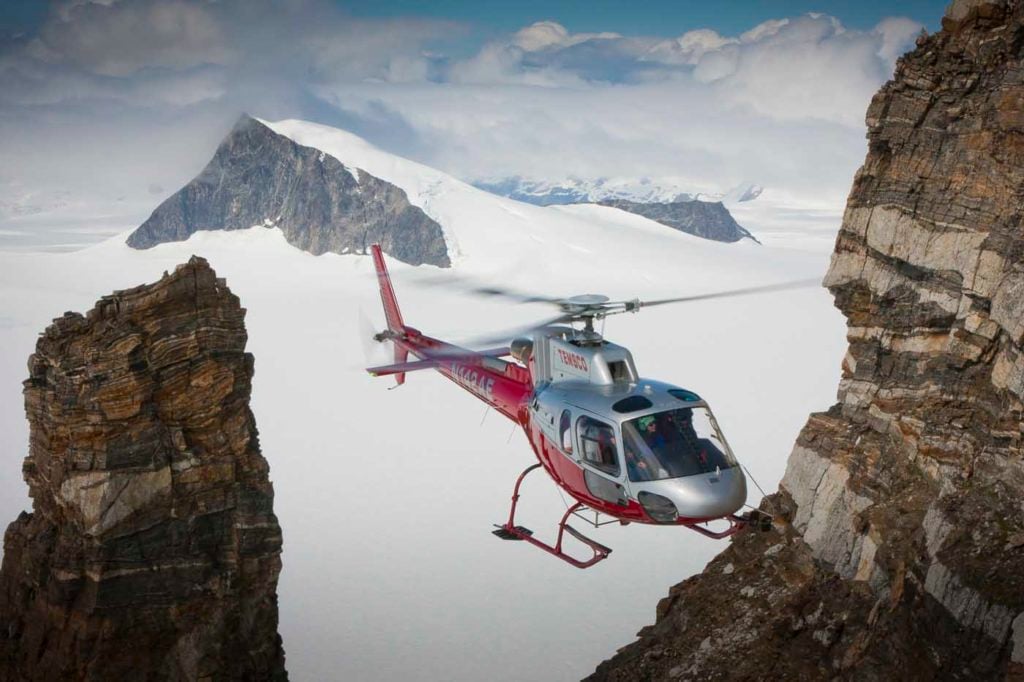
“I think in some respects we got lucky not having our teams here already, so we didn’t have to send people home,” said Craig Jennison, Temsco’s vice president of tours and marketing. “The tour side stopped. Our utility side stayed active, though, as there were still fires burning that needed to be put out, but by the time things opened a bit for tours in 2020, the tour season was over.”
When cruise ships returned in late July 2021, they were only at 50 to 70 percent capacity, limiting the number of flights required.
NorthStar got creative, taking calls from anyone who wanted to fly — from locals and independent travelers, to contract work. “We took every tour call as a charter, and asked people what they wanted to do,” Hasty said. “Without guides to run our traditional trekking tours, we took people out to see what they wanted to see on a custom flight.”
Temsco saw little extra tour demand, but maintained utility work as much as possible. Jennison noted early government stay-at-home orders included non-essential helicopter work, which cut into contract business.
The summer of 2022 saw a full return of the cruise ships, creating a high demand for tours. However, Mother Nature had other plans.
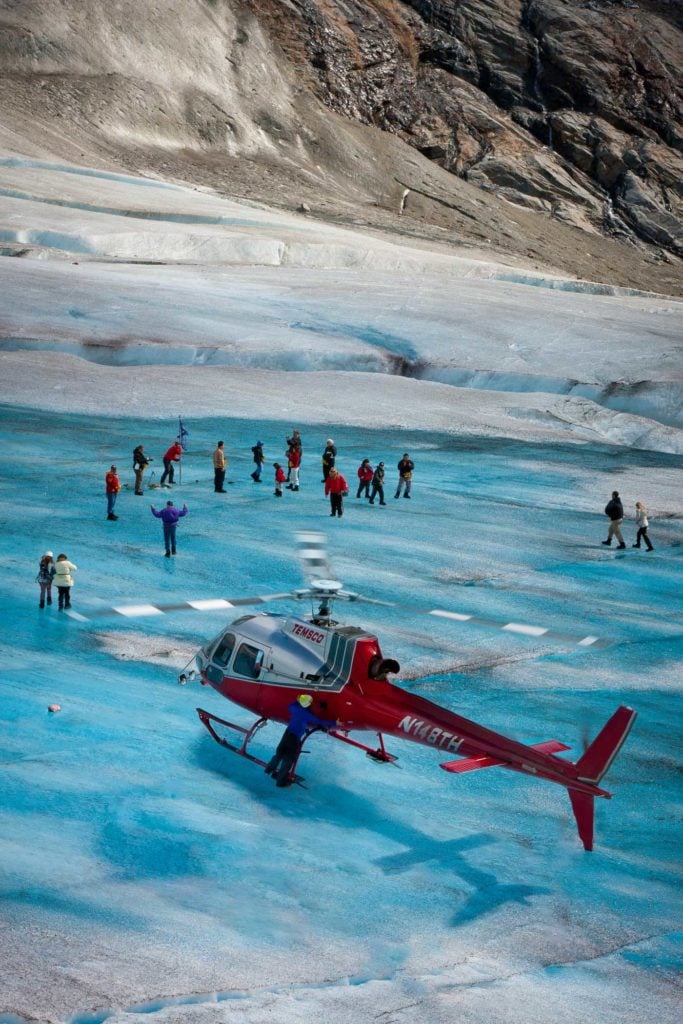
“This summer we learned what ‘atmospheric river’ means,” Jennison joked. “It started raining in July and hasn’t stopped. We are expecting by the end of the season to see between 17 and 25 percent of our booked tours were cancelled because of weather. But the demand is definitely back. If the weather cooperates, we could be back to 2019 numbers next year.”
It’s not all doom and rain in America’s Last Frontier. At NorthStar Helicopters, the leadership took time to re-evaluate the business and identify a path forward that has put it in a strong position this year.
“One thing we decided to do was diversify our operations to expand beyond tours,” Hasty said. “We got busy seeking out contracts and government work. As a result, here we are two years later, and we have more machines in the field than we’ve ever had. This is helping rebuild our pilot team as we’re providing ample operations for expansion. Pilots can do more than just tours with us now.”
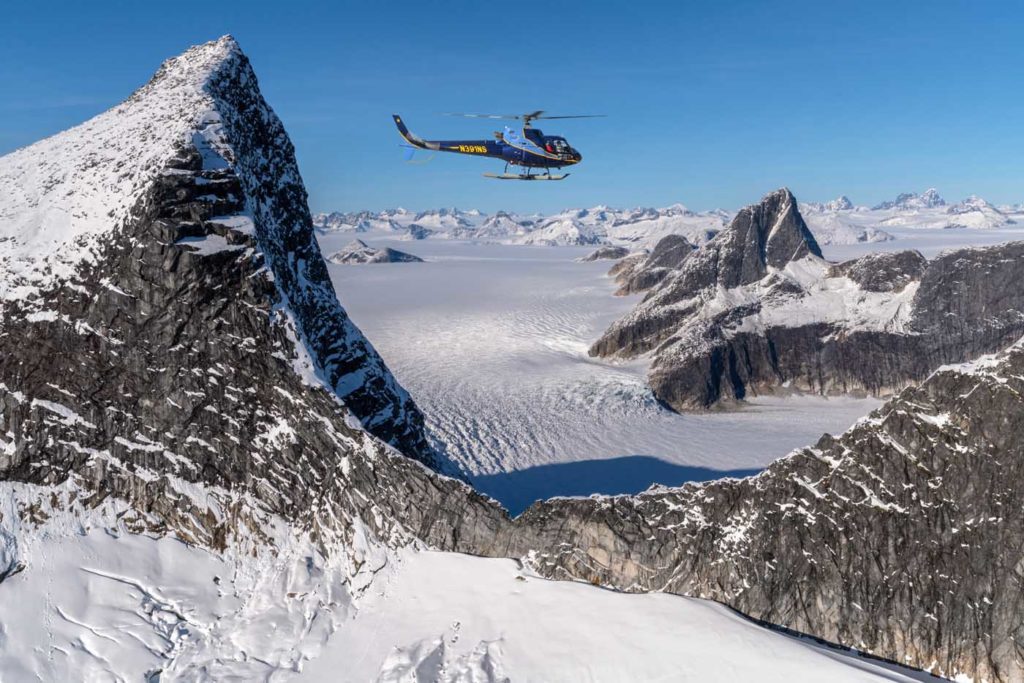
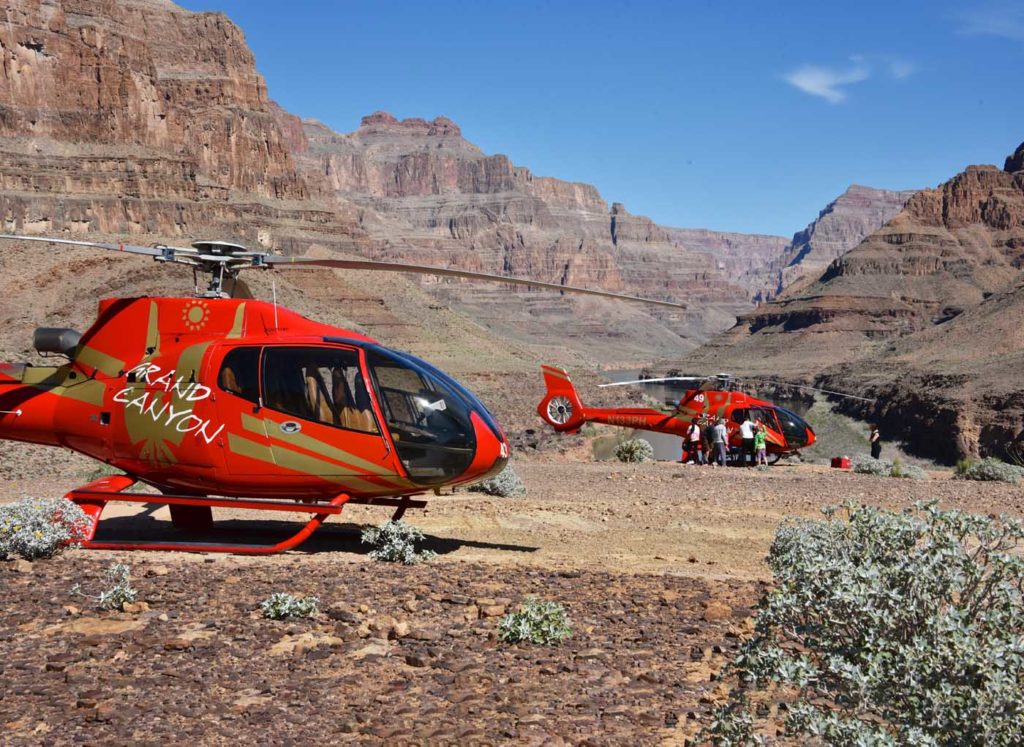
Las Vegas/Grand Canyon
When Sundance Helicopters announced it was permanently closing in August 2020, many in the helicopter tour industry wondered if it was a sign of things to come. Thankfully, most others avoided the same fate.
Fellow Grand Canyon operator Papillon Helicopters — the largest helicopter tour operator in the U.S. — took a very big hit. Between 70 and 80 percent of its passengers are from abroad, and when international travel ceased, Papillon saw its numbers drop significantly.
“We had to downsize big time,” said John Becker, Papillon’s chief operating officer and director of operations. “We were able to keep our core staff and contract teams. We also started looking in other areas for work. Luckily, we had a strong utility side of the house, so we worked on putting assets in that direction and identified different tours we could add in Las Vegas, since demand returned there before the canyon.”
Tours picked up in 2021, but not a significant amount because of the continued lack of international travelers, Becker said. Most of the company’s increased loads occurred in Las Vegas and Boulder, serving the growth in domestic visitors to the City of Lights.
During the pandemic, Papillon leadership also performed a deep audit of the company. “We found a lot of fat you don’t notice in day-to-day operations when you’re busy,” Becker said. “We had the opportunity to reorganize the company to be more efficient and resilient, which I think will benefit us for years to come.”
Today, capacity is growing, but Papillon is still only at about 50 percent of its 2019 numbers when all bases are averaged.
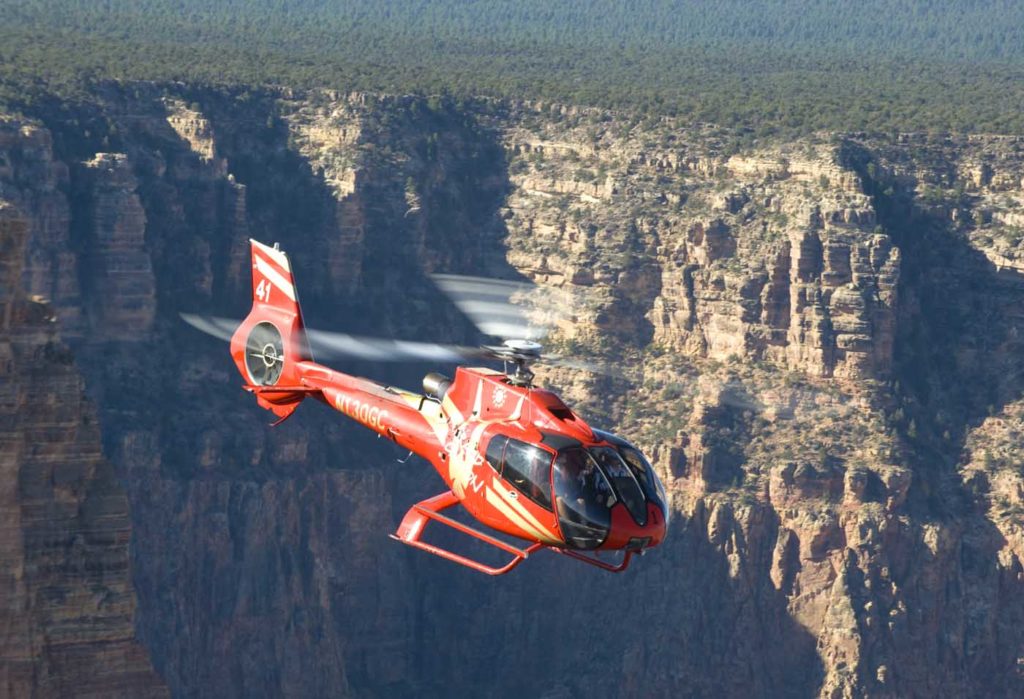
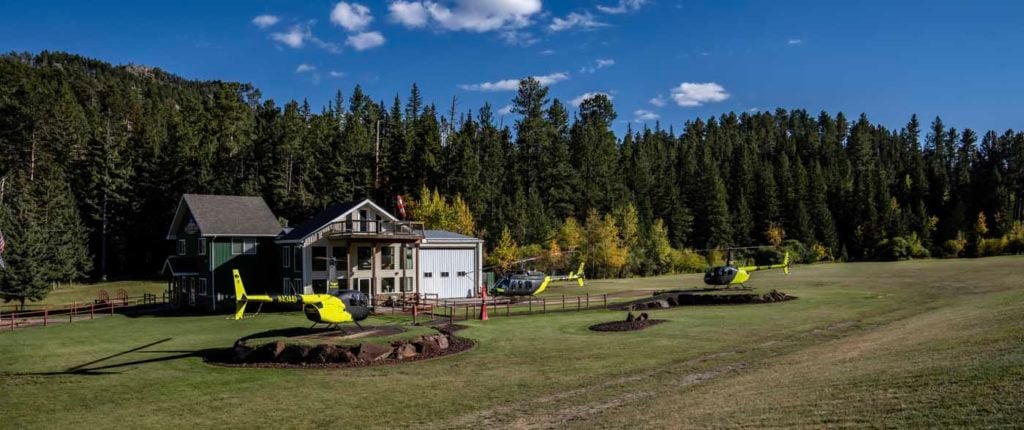
Black Hills, South Dakota
In the spring of 2021, former Sundance Helicopters director of operations Mark Schlaefli purchased Black Hills Aerial Adventures and associated companies with partner John Wells. The company has four different helicopter tour operations in the Black Hills and Badlands National Park areas of South Dakota and West Yellowstone, Montana. Surprisingly, the company experienced its best ever year in 2020, but this was quickly exceeded by 2021’s returns.
“The difference with us is South Dakota didn’t shut down,” Schlaefli said. “Vaccines weren’t required and neither were masks. Road trips became king and people flocked here in droves. Campgrounds and hotels were full as people visited the Black Hills, Mount Rushmore, Crazy Horse, and Badlands.”
As a result of the booming year, Black Hills Aerial Adventures is looking at expanding into smaller satellite operations that are community compatible. The move is partly spurred by the National Park Service reducing the number of flights allowed in Mount Rushmore and Badlands national parks in the near future.
Today, Black Hills Aerial Adventures’ story is the opposite of many other tour operators. It experienced a reduction in passenger loads in 2022, bringing it back to 2019 levels. However, Schlaefli sees a bright future ahead in the state, using the profit from a great year to grow conservatively.
“All tour operators had challenges, some more than others, and we still have other challenges today, like insurance and fuel costs, as well as pilot and maintenance shortages,” he said. “But on the whole, I see the tour industry as really strong, despite efforts by the National Park Service to restrict or eliminate access.”

The Aloha State
On March 26, 2020, Hawaii implemented a 14-day quarantine requirement for incoming visitors that effectively shut down the state’s tourism. This paralyzed tour companies until the Safe Travels Program (where out of state visitors were allowed into Hawaii after showing proof of vaccination and a negative pre-travel test) began in October 2020.
Jack Harter Helicopters, based in Lihue on Kauai, performs some utility work, but the majority of its business is air tours.
“When the state shut down, so did we,” said Casey Riemer, special projects manager at Jack Harter Helicopters. “We couldn’t do anything for two-and-a-half to three months, but we were able to keep all of our staff for a very long time thanks to the federal Payroll Support Program (PSP). We used that time to pickle the aircraft to protect them against Hawaii’s corrosive environment and tackle a number of projects around the business we’d never had time to do, like remodel the office.”
It kept aircraft maintained and pilots current, positioning itself to jump back into the game the day tourism opened again.
Thanks to this, business at Jack Harter Helicopters recovered quickly, Riemer said. Within a couple of weeks of the Safe Travels Program’s start, the company was back to 100 percent of its pre-pandemic levels. While visitors to Hawaii were only about 50 percent of their pre-pandemic levels, the limited supply of helicopter tour operators flying led to full seats for Jack Harter Helicopters, for a short while at least.
“When the governor suggested people not come in August of 2021, our load factors dropped by 60 to 70 percent of capacity,” Riemer said of Governor David Ige’s recommendation to stay away from Hawaii due to a surge in Covid-19 cases and hospitalizations. “When that sentiment changed, we were busy again. But now we’re not as busy as we were six to eight months ago, because people are being more cautious with their spending as they worry about the economy and inflation. That said, our numbers are hovering around the pre-pandemic levels.”
On Oahu, Rainbow Helicopters had a similar experience, watching everything come to a sudden halt. Rainbow was also able to secure PSP funding to maintain almost the entire staff, said company owner Nicole Battjes.
With the exception of an aerial photography flight once or so a month, Rainbow didn’t fly again until October 2020. However, the company kept all pilots current with Covid exemptions from the FAA to fly, and with ground training when they couldn’t fly, Battjes said. This allowed the company to immediately begin ramping up to meet demand when the Safe Travels Program started.

With staff safe in their positions during the pandemic, Battjes used the down time to steer the company toward its future goal — obtaining two Airbus AS350 B helicopters and rebranding the company. Rainbow entered the pandemic as Novictor Helicopters, and the enforced break from operations gave it time to identify a name and culture, and make the change.
Today, Rainbow has three more helicopters than it had pre-pandemic, and is seeing flight loads at an all-time high. What’s more, before the pandemic, flights sold out three to five days before departure. That also changed. For five months in 2021, flights completely sold out two weeks in advance. This year, earlier pre-bookings continue to be more common than pre-pandemic.
As for passengers, both Riemer and Battjes saw almost entirely domestic passengers in late 2020 and all of 2021. The trend seems to be continuing in 2022. Battjes says she has yet to see her traditional passenger loads from Australia, Japan, and Korea.
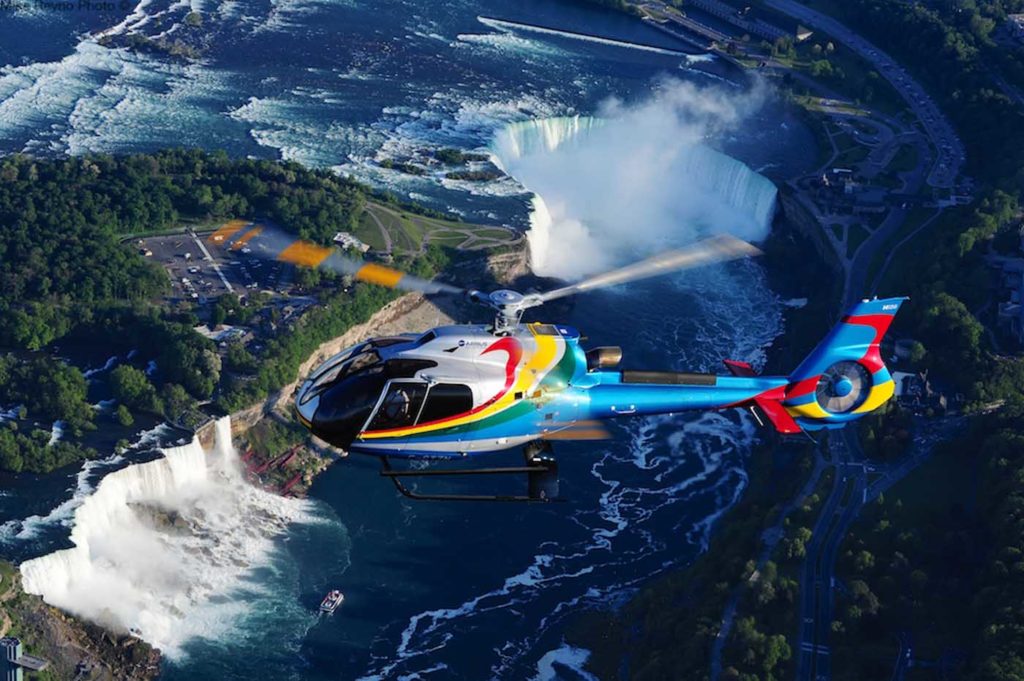
Niagara Falls
In Niagara Falls, Ontario, Niagara Helicopters felt the effects of both Canadian and U.S. shutdown orders. In addition to a Canadian government order to shut down, closed borders and limits on international air travel brought the company to a halt, said Anna Pierce, vice president and general manager of Niagara Helicopters.
“We went down to a skeleton staff of administration and operations people when they first announced the shutdown,” Pierce said. “When we were allowed to return to work, our traditional customers — Europeans and Americans — weren’t there. We shifted everything we had into attracting the Canadian market.”
The company began offering special occasion flights, like birthdays, anniversaries, and proposals, and let people take the tours with their bubble to avoid strangers. To save money, Niagara Helicopters stored its larger Airbus helicopters and offered these flights in its Bell 206.
Canada had a similar program to the U.S.’s PSP, but Niagara Helicopters couldn’t participate. “We laid all our people off in the beginning to save money, so by the time the program was available, we didn’t have much staff or the business to qualify,” Pierce said.
Niagara spent the downtime catching up on projects and performed annual inspections a little early to ensure everything was ready when customers returned.
When the border crossing restrictions relaxed in February 2021, business picked up, Pierce said. However, it wasn’t until July 2021 that the company really started seeing an uptick in business to about 40 percent of what it was pre-pandemic.
“It’s been a roller coaster ever since,” she lamented. “Every time there was negative news about a surge, things slowed down; then, they’d slowly pick back up. This year has been much better, with a general continual upswing. We’re probably at about 65 percent of our number of annual passengers that we had in 2019.”
Niagara Helicopters is in a strong position now thanks to the work done over the pandemic, Pierce added. It offers more charters now than before Covid, and that number is growing as word-of-mouth advertising from those that flew with the company over the pandemic continues to generate more interest.
Payroll Support Program
On March 25, 2020, Congress passed the Coronavirus Aid, Relief, and Economic Security (CARES) Act. As part of this, the PSP provided financial support to passenger air carriers, cargo air carriers, and certain contractors for the continuation of payment of employee wages, salaries, and benefits.
In the beginning, helicopter operators’ eligibility in the program was unclear at best. Helicopter Association International (HAI) stepped in to advocate for FAA part 135 carriers.
“When the program first came out, it was clear it was aimed at the airlines,” said Cade Clark, vice president of government affairs at HAI. “What we needed to do from an HAI perspective was make sure that our members were eligible to receive the funding because they are air carriers.”
HAI’s hard work paid off, and it reached out to member operators to share the news, encourage them to apply, and help them to navigate the application process.
Jack Harter Helicopters, Rainbow Helicopters, and Temsco Helicopters were among those able to secure PSP funds with the help of HAI.
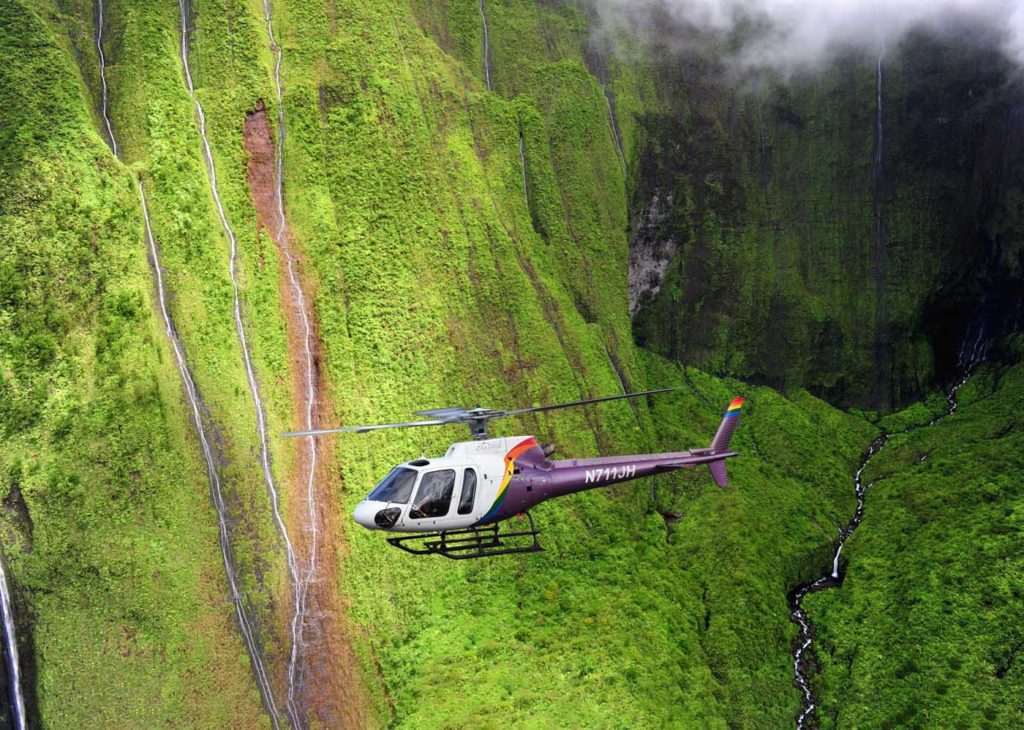
“Cade Clark, Jim Viola, John Shea and others at HAI were vital in helping us understand how to apply for and qualify for the air carrier money,” said Riemer. “I don’t know how successful we’d have been without them; it was all so new to us all.”
According to public records of PSP recipients, more than 35 helicopter operators and contractors supporting the helicopter industry successfully applied for and received PSP funds, totaling close to $400 million. Of those, almost one third of the companies provide helicopter tours as a part of their business model.





